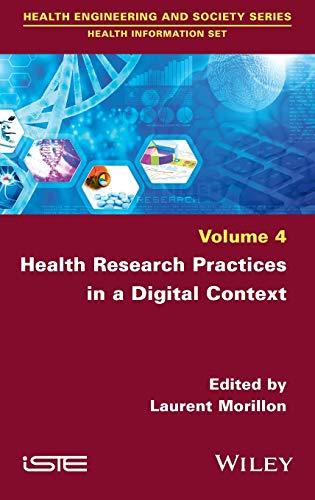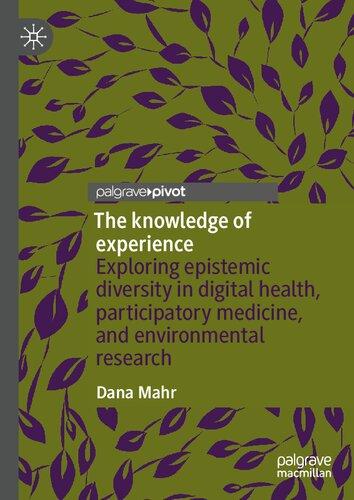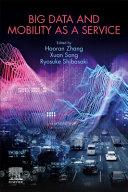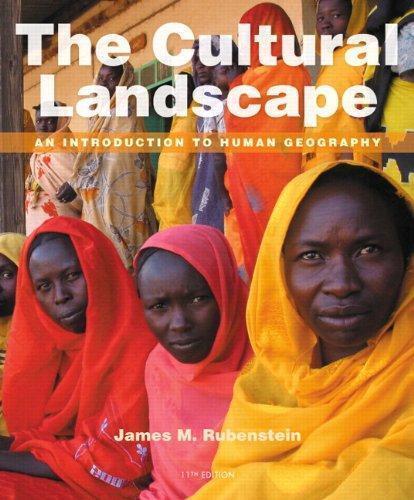Health Research Practices in a Digital Context
Edited by
Laurent Morillon
First published 2020 in Great Britain and the United States by ISTE Ltd and John Wiley & Sons, Inc.
Apart from any fair dealing for the purposes of research or private study, or criticism or review, as permitted under the Copyright, Designs and Patents Act 1988, this publication may only be reproduced, stored or transmitted, in any form or by any means, with the prior permission in writing of the publishers, or in the case of reprographic reproduction in accordance with the terms and licenses issued by the CLA. Enquiries concerning reproduction outside these terms should be sent to the publishers at the undermentioned address:
ISTE Ltd
John Wiley & Sons, Inc.
27-37 St George’s Road 111 River Street London SW19 4EU Hoboken, NJ 07030
UK USA
www.iste.co.uk
www.wiley.com
© ISTE Ltd 2020
The rights of Laurent Morillon to be identified as the author of this work have been asserted by him in accordance with the Copyright, Designs and Patents Act 1988.
Library of Congress Control Number: 2020938265
British Library Cataloguing-in-Publication Data
A CIP record for this book is available from the British Library
ISBN 978-1-78630-438-4
2.1.
2.3.
2.3.1.
2.3.2.
2.4.
2.4.1.
3.1.
3.2.
3.3.
4.1.
4.2.
4.3.3.
4.4.
4.5.
4.6.
4.7.
Part
Chapter 5. Ethical Positions Arising from Research on Online Communities in
Aurélie POURREZ, Elodie CRESPEL, Stéphane DJAHANCHAHI, Olivier GALIBERT and Benoît CORDELIER
5.1.
5.2.
5.2.1.
5.2.2.
5.2.3.
5.3.
5.3.1.
5.3.2.
5.3.3.
5.3.4.
5.4.
5.5.
Chapter
6.1.
6.2.
6.3.
6.4.
6.5.
6.6.
Part 3. Thinking Approaches to Health
Chapter 7. Interests and Limitations of Interdisciplinary Research in a Living Lab to Meet the Needs of Senior Citizens .............
Elizabeth BOUGEOIS and Hélène GERMAIN
7.1. Introduction ....................................
7.2. Reconsidering a Living Lab study: the centrality of user-experts
7.2.1. Senior citizens and new technologies in a controlled environment
7.2.2. The second study or how to reconsider research practices
7.3. When experts-users tell researchers where to look
7.3.1. Use of human, technical and digital aids by respondents ................................
7.3.2. Projected uses: from voice command to “smart” robots ..................................
7.4. Among researchers: postures linked to disciplinary backgrounds
7.5.
7.6.
Chapter 8. For a Comprehensive Approach to the Info-communication Practices of Breast
Screening
Dorsaf OMRANE and Pierre MIGNOT
8.1. Introduction
8.2. State of the art of organized screening, a complex prevention system ............................
8.2.1. Screening: device, issues and controversies
8.2.2. Representation of screening: between confidence and mistrust
8.3. Need to understand the field of screening: methodological framework .............................
8.3.1. Exploratory approach: quantitative reflection on screening...............................
8.3.2. Ethnographic survey and qualitative content analysis: a comprehensive approach to screening
8.4. Conclusion
8.5. References
Chapter 9. Health Research on Immunization after 2016: The
Mylène COSTES and Audrey ARNOULT
9.1. Introduction ....................................
9.2. An exploratory study that raises methodological questions........
9.2.1. Construction of research questions....................
9.2.2. A test methodology with limitations ...................
9.2.3. Reflexivity on the concept of “axiological neutrality” ........
9.2.4. Unexpected results that lead to (re)thinking the method deployed ........................
9.3. The use of lexicometry for the analysis of interviews on vaccine hesitation and opposition
9.3.1. Expanded field and themes ........................
9.3.2. The potential contributions of the Iramuteq software to health research
9.4. Conclusion
9.5.
Chapter
Sophie DALLE-NAZEBI
10.1.
10.2. Topicality of methodological issues in
10.2.1. Context and issues in SL health
10.2.2. The communication dimension at the heart of research activities ............................
10.3. The communication challenges of interviews in SL
10.3.1. Challenges of a fine work on what is said in SL
10.3.2. Domesticating the camera, keeping your hand on the format of exchanges .....................
10.3.3. Interacting in SL: a repositioning of bodies and objects ......
10.4. Exposing SL speech analysis in publications
10.4.1. Sharing benchmarks, a professional vision ..............
10.4.2. Test of an example ............................
10.4.3. The communicational anchoring of reading .............
10.5. Conclusion ...................................
10.6. References ....................................
Foreword
This book is the fourth in a set of books entitled “Health Information”, coordinated by Céline Paganelli and Viviane Clavier. It is part of the “Health Engineering and Society” collection proposed by Bruno Salgues. Each book is the subject of a specific editorial project designed in close collaboration with its editor(s).
This book focuses on health research practices in the digital environment. It proposes 10 contributions that address, on the one hand, some of the developments in digitally related information and communication practices in the field of health and, on the other hand, some ethical and methodological questions on research carried out in this context. This book is first of all the result of seminars initiated within the health axis of the laboratory of studies and applied research in social sciences (LERASS – EA 827) of Paul Sabatier Toulouse 3 and Paul Valéry Montpellier 3 universities (France). Individual solicitations completed the texts then collected. These proposals were subject to a double-blind evaluation, followed by a constructive process of re-reading and more or less substantial improvements. In this regard, Laurent Morillon, University Professor in Information and Communication Sciences at the University of the French West Indies, LC2S (UMR 8053), warmly thanks the members of the reading committee composed of:
Luc Bonneville, Full Professor, Department of Communication, GRICO, University of Ottawa;
Viviane Clavier, HDR Lecturer in Information and Communication Sciences, GRESEC, Université Grenoble Alpes;
Viviane Couzinet, Professor Emeritus in Information and Communication Sciences, LERASS, University of Toulouse 3;
Jean-Claude Domenget, HDR Lecturer in Information and Communication Sciences, ELLIADD, University of Burgundy –Franche-Comté;
Elizabeth Gardère, Professor of Information and Communication Sciences, MICA, University of Bordeaux;
Sylvie Grosjean, Full Professor, Department of Communication, GRICO, University of Ottawa;
Valérie Lépine, Professor of Information and Communication Sciences, LERASS-Céric, University of Montpellier 3;
Anne Mayère, Professor of Information and Communication Sciences, CERTOP, University of Toulouse 3;
Céline Paganelli, Professor of Information and Communication Sciences, LERASS-Céric, University of Montpellier 3.
1Introduction
Health, affirmed as one of the fundamental rights of every human being by the World Health Organization, is at the center of major political, societal, economic, financial, legal, organizational and technological issues. Its developments are indeed occupying a significant place in public debate and media discourse. The French health ecosystem – characterized, among others, by its public status and social security system – is influenced by different environments and actors that modify representations and guide the conduct of activities and practices. For example, the public authorities impose different processes of management, rationalization, standardization or regulation of the healthcare system in order to control (intend to reduce) costs. At the same time, more than ever before, “users” demand customized, reliable and rapid care, and transparency of information. The trend towards “empowerment” invites them to become actors in their own health, both in the prevention and treatment of illness. What is then projected is an idealized figure of a patient – whose experience is now recognized as an expertise –who optimizes his or her disease “trajectory” [STR 92] and care “path” by becoming an “agile” and responsible partner, capable of evaluating the quality of care.
The current “generalized digitization” of society is also influencing the health environment and healthcare actors. The technological environment indeed witnessed the emergence in the 1990s, and then the generalization in the 2000s, of “digital technologies” and in particular the New Information and Communication Technologies (NICTs that have become ICTs). Technical developments have been important in terms of computers, mobile
Introduction written by Laurent MORILLON.
Health Research Practices in a Digital Context
terminals (tablets, smartphones, laptops, etc.), networks (5G, Wi-Fi max, hotspot, fiber, etc.), the Internet of Things, applications, etc. Today, digital technology is omnipresent in everyone’s daily life as well as in most professional activities. Thus, “e-health”, the use of ICTs for health activities, has brought about profound changes. For example, within dedicated organizations – also responding to the “all-computerized” injunctions of public authorities and certain lobbies – digital technology influences activity and relationships by modulating space and time constraints. It promotes networking, the flexibility of working relationships, the constitution of communities of practice, and the production and dissemination of knowledge. Digital technology is also changing the informational practices (tracing, storing and disseminating) and, more generally, the professional practices of health actors (caring, deciding, coordinating, interacting, etc.). Massive amounts of data produced, distributed and shared by a diversity of (inter)connected devices (applications, software, electronic health records, etc.) contribute to changes in professions, roles and statuses (caregivers, laypeople, academics, experts, etc.), relational spaces (online communities, etc.) and modes of interaction between caregivers and patients. The health Internet has changed relationships with doctors, from scheduling an appointment (online) to a consultation. With information more than ever dematerialized and distributed over the network of networks, even the most specialized information is freely accessible. Many people now consult their doctor with a certain amount of information and advice, without necessarily telling him or her. Whether in terms of research and information sharing or exchanges and controversies, uses are constantly evolving.
However, novelty, especially when it is technical, is often assimilated to modernity and the associated myths are very strong. Digital tools, whether terminals, networks or applications, are thus frequently considered as “magic wands” [PER 89] to better share, communicate or work together. Technology is synonymous with optimization, harmonization, interdisciplinary, speed of execution, collaborative work and organizational rationality. The speeches of its promoters, often caricatured and/or prophetic, invoke the supremacy of digital technology and/or the revolution it would allow. They fuel both the hopes and fears of economic and political actors who do not hesitate to impose the adoption of technologies to “reform”.
In this context, research in the humanities and social sciences (HSS) is looking back at the growing importance of digital technology. They understand both the objects and the issues at stake, the logic of use and
associated practices, as well as the roles and influences of the devices at work. Beyond the myths, they deconstruct, nuance and sometimes challenge certain preconceived ideas and/or dominant discourses, whether they are technical, managerial or governmental. Since the 1990s, various researchers (Alter, Crozier, Friedberg, Bernoux, etc.) have shown the real uses (from misappropriation to rejection) of technical objects, however efficient they may be. Others (Boutary, d’Iribarne, Gadille, Monnoyer, etc.) have highlighted the costs and drawbacks of ICTs in terms of information security, potential blockages or loss of time. Among the HSS, reflection on ICTs has been rich for the past 20 years and is now well structured in information and communication sciences (ICS). In the field of health, many studies deal, for example, with the influence of digital devices on information retrieval, the appropriation of digital patient records by healthcare teams, the reception of national prevention campaigns, the debates on social networks, etc. Info-communication approaches then go beyond “simple” technical questions.
This book provides an original look at these research works by proposing to focus on research practices. It is a question of taking an interest in “science in the making” which, according to Bruno Latour, is living, uncertain, informal, changing and at the origin of “already made” science that appears in counterpoint as austere, formalist and regulated [LAT 89]. However, it is ambitious to carry out a reflexive return on the modalities of production because if researchers act “in a rather closed field” [GRY 04, p. 151] and their production is accessible, the “factory of science” is not always visible [MON 05]. The object is therefore neither “monumental” science, to use Mondada’s expression [MON 05], nor the processes of knowledge creation in the manner of Latour [LAT 89]. The analysis here focuses on a part of the ordinary work of researchers, sometimes not considered because it is regarded as not very noble and/or unproductive. However, more than ever before, beyond ethical behavior and a reflexive quest for rigor, the development of knowledge leads to a detailed explanation of the systems implemented and a justification of the legitimacy of the knowledge developed (LEM 01).
We therefore first invited researchers from the Laboratory for Studies and Applied Research in Social Sciences (LERASS – EA 827), and then those from other French and foreign laboratories, to question their scientific practices through the prism of epistemology, ethics or methodology, once they have grasped digital health. They then conducted an intellectual
introspection to shed light on the goals, values and issues of their work, analyzing their posture and approach. By opening their “conceptual toolbox” [MUC 98], they provide a reflexive, even critical, feedback on their methods and techniques, as well as on the choices that have guided the analyses, by revealing elements to be linked. But inviting the scientist to reflect on his or her own practices can induce a form of “implexity”. For going back over his/her work and the epistemic path he/she has also taken means accepting the potential for revealing compromises, “tinkering” [LÉV 62], “poaching” [DEC 80] or inconsistencies with the initial objectives.
Contributions to this work come from authors of four nationalities (French, Belgian, Canadian and Mexican) and three disciplines (ICS, of course, as well as sociology and psychology). It brings together 10 contributions and is structured into three parts. The first part, with four chapters, presents, by way of contextualization, some of the changing contexts and info-communication practices related to digital health. These are observations, interviews and sometimes quantitative questionnaires that allow a distanced reading of the phenomena at work.
In the first chapter, Hélène Romeyer looks back over 15 years of work and asks what an ICS researcher can bring to the study of online health, a sector and a professional field characterized by tension and rivalry. In order to avoid a disruptive analysis of digital development in this sector, the author first proposes to deconstruct the idea of a “revolution” generated by digital technology. She favors a study of the chronology of the successive transformations of the health system and notes, among other things, the emergence of genuine content industries specializing in the field of health, a movement towards the privatization of public medical information and attempts to control the legislator. Faced with the multiplication of medical and health information, its ease of access and its continuous nature, Hélène Romeyer then turns her attention to its uses. While the search for information is becoming more permanent and commonplace, she notes that trust in doctors is being maintained, there is interest in the community spaces offered by certain sites and the emergence of new forms of expression.
This study of informative practices is echoed in that of Adrien Defossez. In his chapter, he is particularly interested in the constraints and difficulties faced by sick people in their mobilization of different sources of information in the context of their pathology. To this end, he has initiated about 60 semi-directive interviews with people suffering from cancer. Beyond the
information from the doctor, he notes that the patient’s health “information system” is made up of digital as well as, and sometimes especially, social resources. Relatives (spouse, relative or friend), when they are called upon, can then occupy an essential place. Whether “professional”, “insider” or “lay person”, they provide access to differentiated information or resources. But the socio-professional category of the patient offers different opportunities. And while digital resources may then appear as a means of compensating for a “failure” of social resources, their reliability and the ability to use them efficiently may be lacking.
In the third chapter, it is through an autobiographical return that Philippe Marrast takes us to the heart of certain contemporary changes in hospital activity. His interest focuses on hospital rationalization processes and, more particularly, on the implementation of IT tools, such as the electronic health record, to support medical activity. Beyond what can be prescribed, it seeks to know the real and contingent activity of caregivers. This reflection on social practices is taking place in a French hospital specialized in oncology. An original stance in between ICS and computer sciences is developed to question the “sociomaterialities” of work environments. For three years, individual interviews and participant observations enabled him to understand the recomposition of nursing practices and to characterize the transformation of writing modalities. In particular, he notes heterogeneous socio-technical assemblages that require a “fabrication” and a “translation” of information on the part of caregivers and patients. Despite the computerization of patient records, paper remains omnipresent and annotation practices are finally proving to be a part of the complex activity and organization, which is the hospital.
Finally, the first part of this book concludes with a chapter by Silvia Rosa Sigalès Ruiz, Erik De Soir, Claudia Veronica Marquez Gonzalez and Michèle Caria. These researchers propose to analyze online instruction manuals, available in Latin America, to enable volunteers in relief teams to take charge of the psychology of disaster victims (earthquake, flood, terrorist act, etc.). For their qualitative content analysis, they used four criteria: documentary information, pedagogical engineering, mental health intervention protocols and disaster management protocols. For example, they note that the metadata expected for an online educational document is not present; these manuals do not apply the principles of educational engineering; and they have a varying or even partial understanding of intervention protocols in mental health and disaster management. However,
while these manuals are freely available on the Internet for any lay person (or general psychologist) wishing to help victims in disaster situations, the implementation of incomplete instructions can become a risk factor for victims and an additional cause of long-term psychological discomfort. To avoid undermining the status of expertise and the legitimacy of their discipline, the authors therefore urge that the scientific validity of the knowledge disseminated on the Internet should be ensured to deal with sensitive situations such as mental health.
In the next two parts of this book, researchers offer reflective, sometimes critical, feedback on their work. In the field of health, moral, ethical and deontological issues are pervasive, numerous and complex. The second part does not list them exhaustively but opens, more modestly, a space for reflection dedicated to this theoretical deontology: moral responsibility of an involved researcher, instrumentalization of science, values and commitments of the scientist, etc. Research activity, as a social practice in fact, introduces researchers into a relationship, sometimes contractual, through which they are confronted with choices that engage its responsibility. Ethics then consists of a set of duties towards each other: research subjects, peers, sponsors, etc. [GOM 96]. In the course of their work, and even more so when they are involved, HSS scientists are committed by their status as researchers, practitioners and citizens [BÉZ 96]. For the health field, if their responsibility seems a priori more diffuse than that of medical researchers, for example, the ethical implications are all the more necessary since the object of the research sees the participation of humans who cannot be manipulated as “simple” molecules.
This part opens with the chapter by Aurélie Pourrez, Elodie Crespel, Stéphane Djahanchahi, Olivier Galibert and Benoît Cordelier. Their reflection is based on a research program in Digital Technologies, Information, Communication and Health that mobilizes ethnographic approaches. The project questions the digital mediation of health knowledge and the digitalization of social support between patients and/or caregivers through the observation of online communities. The themes, specificities of the fields, evolving legislative framework, methodological choices and the nature of the comments likely to be collected require, in their opinion, that ethical issues be put into perspective. The questions they ask, which are restricted to empirical and methodological aspects, are varied: Is it necessary
to obtain explicit permission from the interviewees to observe and analyze the digital traces of their interactions? Does the researcher-observer have to reveal himself or herself to his or her observers? How can we protect both the observed user-members and the researcher-observers? In order to produce “responsible” knowledge in the field of health in ICS, the authors call for both individual and collective reflective and critical caution, including the subjective as well as intersubjective mobilization of empirical and methodological scientific ethics.
In the following chapter, Emilie Blanc proposes a reflection on both method and ethics. As a social worker in a financial center of La Poste Group, she carried out action research as part of her PhD in ICS. She questions the role of “organizing communication” in the prevention of psychosocial risks related to digital acculturation. In a “therapeutic” aim, research is involved with operational purposes since it aims to transform social practices. Noting the scarcity of presentations and analyses on the actual methodological deployment of action research, the practitioner-researcher proposes to review the method she negotiated with the sponsor and then implemented. In order to act on the prevention of psychosocial risks linked to digital acculturation, she chooses a collective reflection by and for the employees. She uses documentary, quantitative (based on questionnaires) and qualitative (with individual and group interviews) approaches. Finally, the author discusses some of the ethical tensions that arose during the preparation, implementation and reporting of her action research.
In the third and last part of this book, the researchers question the methods they have implemented in projects that addressed health and digital issues. Returning to the method is all the more crucial since scientific fact is not an essence but the result of a process [LAT 99], and it is not so much the object that makes science as the perspective chosen. When in doubt and open to questioning, scientists adopt a priori an ad hoc intellectual approach [QUI 88]: they choose from a conceptual toolbox the most relevant techniques, at a given time, according to a specific project. For Moscovici and Buschini [MOS 03], a method is therefore the choice of a way of doing, working and even living. But the relationship to the field and the particularities of the object can induce biases in positions and provisions [BER 06] as well as the emergence of non-rational criteria depending on the actors and their expectations.
In their chapter, Elizabeth Bougeois and Hélène Germain question the interests and limits of interdisciplinary research in the living lab to meet the needs of senior citizens. In a context favorable to “aging well”, technologies to palliate loss of autonomy are considered likely to enhance the independence and well-being of older people. However, these devices, which are often designed with a medicalized view of old age, do not always meet the needs of their potential users and can induce fears. It is within the framework of a Living Lab in Health and Autonomy – a device that enables the design of technical solutions for personal assistance with users considered experts – that two collaborative action research projects have been developed. The first aims to collect and analyze the uses and needs of senior citizens in new technologies; the second reconsiders the first study through the prism of the methodological device and what underlies it. Thus, the observation and collection of the responses of the people surveyed redirected the work of the researchers towards a close and set definition of precise needs, based on unique experiences. Similarly, as a result of some difficulties of cross-comprehension in interdisciplinary research work, agreements were reached between researchers in science and technology and researchers in the human and social sciences. But despite these difficulties, interdisciplinarity seems indispensable to the authors in order to design technologies that will support senior citizens in the future.
Dorsaf Omrane and Pierre Mignot present a comprehensive approach to information and communication practices for breast cancer prevention. According to them, prevention, which is inherently complex in nature, requires us to reflect, on the one hand, on how to think globally and, on the other hand, on the methodological framework that will enable us to understand this phenomenon and its info-communication issues. After presenting a summary of the context of organized screening in France – in particular its questioning – the chapter discusses the methodological choices of two projects carried out with a public interest group that implements and coordinates this screening for a French department. The ultimate goal is to offer a series of lectures broadcast to physicians via a secure website. The methodological articulation is original in that it first implements a quantitative approach known as “exploratory”, which then allows the construction of a qualitative phase. In the end, quantitative and qualitative analyses of digital social network discourses enrich online ethnographic observations and reveal the existence of social support.
In their chapter, Mylène Costes and Audrey Arnoult advocate for a plural methodological approach in order to initiate research on the place and roles of information sources in “vaccine hesitation”. The context is that of a drop in vaccination coverage in France, which would be linked to a climate of mistrust towards vaccination both among the general public and a (minority) fringe of health professionals. Vaccination remains a very controversial topic, especially on digital social networks. The authors first propose to review their exploratory study based on the questioning of 52 people in a pediatric practice. The results guided the questions and the methodological apparatus to be implemented. For the second part of their study, they propose a collection of semi-structured interviews (qualitative) and a lexicometric analysis (quantitative). This choice postulates that qualitative and quantitative are complementary in order to grasp the complexity of the phenomenon. In addition, it allows the researcher’s subjectivity in the analysis to be objectified in a certain way. The roles of digital social networks and online forums are part of the focus of the maintenance guide that will be administered.
Finally, in the last chapter, Sophie Dalle-Nazebi proposes to address some epistemological and methodological reflections on qualitative research conducted in sign languages in the field of health. First of all, she sets out the context and two major issues: gaining access to the perspectives of deaf people who use sign language and clarifying the communicative and interactional skills at work in these relationships. The author then discusses some methodological aspects when the languages, media and research methods used are different. It discusses the practical conditions for the production, video recording, transcription and analysis of interviews in French sign language, as well as some of the issues related to the publication of interaction analyses in this language. This reflection finally questions the modalities of participation of researchers and their work of scientific publication. It concludes by encouraging a pragmatic approach to communication issues, taking into account the materiality of communication practices.
References
[BER 06] BERNARD F., “Le laboratoire des sciences de l’information et de la communication. Entre prise, emprise et déprise des pratiques en information et communication”, 15th SFSIC Conference, Questionner les pratiques d’information et de communication. Agir professionnel et agir social, Bordeaux, pp. 1–17, May 2006.
[BÉZ 96] BEZILLE H., VICENTE M., “La recherche en train de se faire : entre rigueur et compromis”, in FELDMAN J., FILLOUX J.-C., LECUYER B.-P. et al. (eds), Ethique, épistémologie et sciences de l’homme, L’Harmattan, Paris, pp. 173–194, 1996.
[DEC 80] DE CERTEAU M., L’invention du quotidien. 1. Arts de faire, Gallimard, Paris, 1980.
[GOM 96] GOMEZ L.-E., “Culpabilité et implication”, in FELDMAN J., FILLOUX J.-C., LECUYER B.-P. et al. (eds), Ethique, épistémologie et sciences de l’homme, L’Harmattan, Paris, pp. 48–58, 1996.
[GRY 04] GRYSPEERDT A., “Relations publiques et recherche en communication”, Hermès, no. 38, pp. 148–154, available at: https://www.cairn.info/revue-hermesla-revue-2004-1-page-148.htm, 2004.
[KAP 06] KAPITZ C., “L’éthique questionnée par les SIC”, 15th SFSIC Conference, Questionner les pratiques d’information et de communication, agir professionnel et agir social, Université de Bordeaux, pp. 345–351, 10–12 May 2006.
[LAT 89] LATOUR B., La science en action, Éditions La Découverte, Paris, 1989.
[LAT 99] LATOUR B., Politiques de la nature. Comment faire entrer les sciences en démocratie, Éditions La Découverte, Paris, 1999.
[LEM 01] LE MOIGNE J.-L., Le constructivisme : vol. 1. Les enracinements, L’Harmattan, Paris, 2001.
[LÉV 62] LÉVI-STRAUSS C., La Pensée sauvage, Éditions Plon, Paris, 1962.
[MON 05] MONDADA L., Chercheurs en interaction, comment émergent les savoirs, Presses polytechniques universitaires romandes, Lausanne, 2005.
[MOS 03] MOSCOVICI S., BUSCHINI F. (eds), Les méthodes des sciences humaines, Presses universitaires de France, Paris, 2003.
[MUC 98] MUCCHIELLI A., GUIVARCH J., Nouvelles méthodes d’étude des communications, Armand Colin, Paris, 1998.
[PER 89] PERRIAULT J., La logique de l’usage, essai sur les machines à communiquer, Flammarion, Paris, 1989.
[QUI 88] QUIVY R., CAMPENHOUDT L.V., Manuel de recherche en sciences sociales, Bordas, Paris, 1988.
[STR 92] STRAUSS A.L., La trame de la négociation – Sociologie qualitative et interactionnisme, L’Harmattan, Paris, 1992.
Changes in Contexts and Info-communication Practices Related to the Digital Environment in the Health Field













